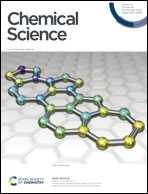An antibody scanning method for the detection of α-synuclein oligomers in the serum of Parkinson's disease patients†
Abstract
Misfolded α-synuclein oligomers are closely implicated in the pathology of Parkinson's disease and related synucleinopathies. The elusive nature of these aberrant assemblies makes it challenging to develop quantitative methods to detect them and modify their behavior. Existing detection methods use antibodies to bind α-synuclein aggregates in biofluids, although it remains challenging to raise antibodies against α-synuclein oligomers. To address this problem, we used an antibody scanning approach in which we designed a panel of 9 single-domain epitope-specific antibodies against α-synuclein. We screened these antibodies for their ability to inhibit the aggregation process of α-synuclein, finding that they affected the generation of α-synuclein oligomers to different extents. We then used these antibodies to investigate the size distribution and morphology of soluble α-synuclein aggregates in serum and cerebrospinal fluid samples from Parkinson's disease patients. Our results indicate that the approach that we present offers a promising route for the development of antibodies to characterize soluble α-synuclein aggregates in biofluids.

- This article is part of the themed collections: Celebrating our 2025 Prizewinners and Most popular 2022 analytical chemistry articles


 Please wait while we load your content...
Please wait while we load your content...